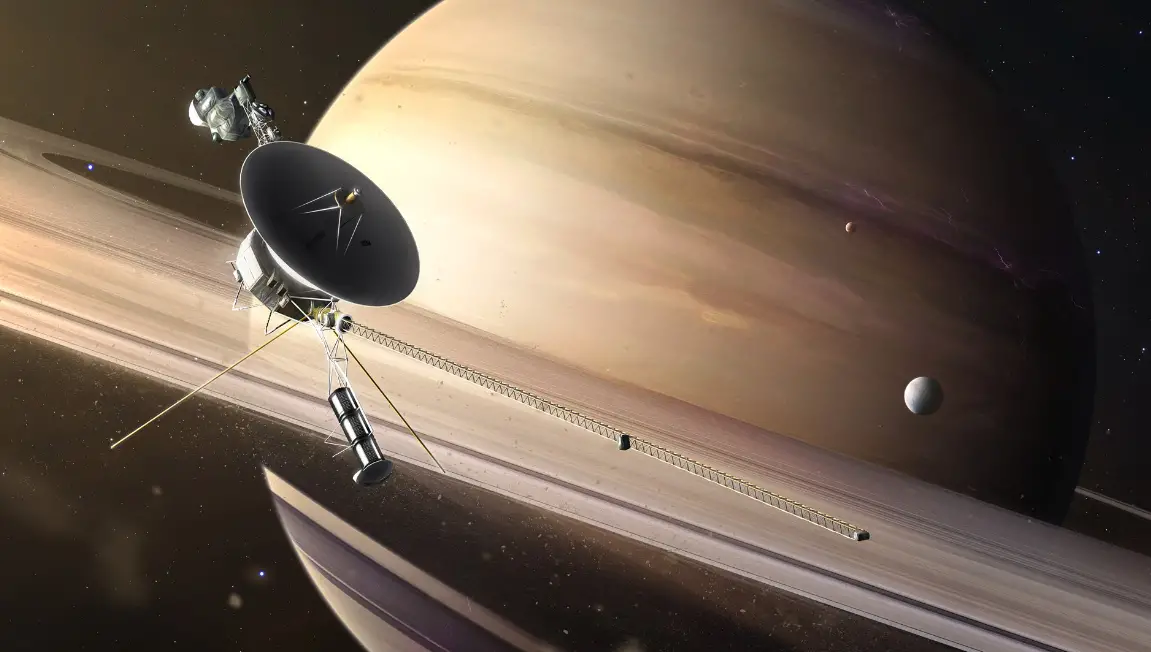NASA is being very careful not to state that Voyager 1 has left our solar system; it still needs to traverse through the Oort Cloud before entering interstellar space.
Voyager was designed to detect solar flare-generated ripples in plasma as frequencies, and when Don Gurnett heard an increase in pitch, this signaled Voyager had passed beyond the heliopause boundary.
Table of Contents
Distance from Earth
Voyager 1 first set off on its journey in 1977 with a mission of exploring the outer edges of our solar system, but two decades later became famous for another reason – taking one of the most iconic photos ever taken in spaceflight history: Earth from 3.7 billion miles away (now known as Pale Blue Dot). It illustrates just how small and fragile life on our home planet really is against such an immense backdrop of space.
Voyager probes have traveled farther than any human-made object ever has and continue to send back invaluable data for researchers. Now in interstellar space, these probes have passed beyond the solar system’s protective magnetic fields and charged particles and are sending information back home about interstellar space itself.
Also read: How Long is a City Block? Prevent Getting Lost.
Astronomers confirmed in 2012 that Voyager 1 had crossed the boundary between heliosphere and interstellar space – making it the first man-made object ever to leave our solar system. Voyager 1’s velocity exceeds that of Voyager 2, giving it a significant lead.
Voyager 1 took many amazing images back from its journey beyond our solar system and beyond, including closeups of Jupiter and Saturn’s moons. Additionally, Voyager 1 contains a Golden Record filled with pictures of Earth, scientific information, spoken greetings from people such as Chuck Berry to Mozart; all designed in case aliens discover our spacecraft and seek more knowledge about our world.
Distance from the Sun
Voyager 1 has reached approximately 125 AU from our Sun. That may seem far away, but it serves as a reminder that it’s only half a degree across in Voyager’s location – you can use Celestia to get an even more accurate depiction of how it appears at that distance.
Voyager continues its explorations at the outer limits of our solar system. Recently, it overtook Pioneer 10 as the most distant spacecraft from Earth and is also currently moving at record speed – being one of only human-made objects that travel faster in space than it does on Earth!
Voyager will encounter many fascinating sights while traversing the heliosphere, the area surrounding the Sun where solar winds flow, including encounters with “Local Clouds,” interstellar debris that plays an essential part in determining the size of its host heliosphere.
The Local Cloud may compress Voyager’s heliosphere, making its escape difficult. Even if Voyager succeeds, however, it will take approximately 74 millennia for it to reach Proxima Centauri – our closest star system! That may sound like an eternity away but who knows what other discoveries Voyager might make along its journey!
Distance from the Oort Cloud
The Oort Cloud is a massive spherical cloud of objects surrounding our solar system and believed to contain comets ejected or captured from other Milky Way systems. The outer edge of this massive object extends a trillion miles from our sun; hence its nickname as “Sun’s Orbital Zone.”
Oort cloud’s outermost layer is not fully connected to our solar system and can be affected by tide-forces from molecular clouds, passing stars, or even our Milky Way galaxy. It is estimated to contain more than 20 Earth masses’ worth of ice and rock that was left over from planet formation.
Astronomers have not observed evidence of extrasolar Oort clouds; however, it’s possible they exist but would likely be too far away for us to detect them.
Voyager 1 will enter the Oort Cloud approximately 300 years from now and exit it 30 years after, which is considerably faster than Pluto’s orbit around the sun.
Voyager 1 can be tracked in real-time using NASA JPL’s Live Position and Data Tracker, while Celestia offers virtual tours of where Voyager 1 currently is in space.
Distance from the Milky Way
Voyager 1 to Proxima Centauri is approximately 4.2 light years away – an immense distance that may be hard to comprehend. But understanding its significance helps us appreciate just how small we humans are in comparison with all of creation.
Since leaving our solar system in 2012, Voyager 1 has taken photos of distant stars and objects which cannot be seen from Earth – providing vital insight into our place within the Milky Way and beyond.
Alongside their scientific data, probes also contain Golden Records designed to convey a sense of wonder and humanity shared among scientists building spacecraft by their colleagues, family and friends. These records aim to convey this unique connection.
Voyager 1 and 2 continue their rapid acceleration away from our Solar System at an estimated annual acceleration of 3.6 au (330 million miles; 540 million km). They represent humanity’s first machines that have reached the outer edges of interstellar space.
Recently, scientists were uncertain as to where exactly the heliopause (the boundary between Earth’s heliosphere and interstellar space) lies; but recent evidence indicates its departure date due to lower electron density than inside our solar system.


